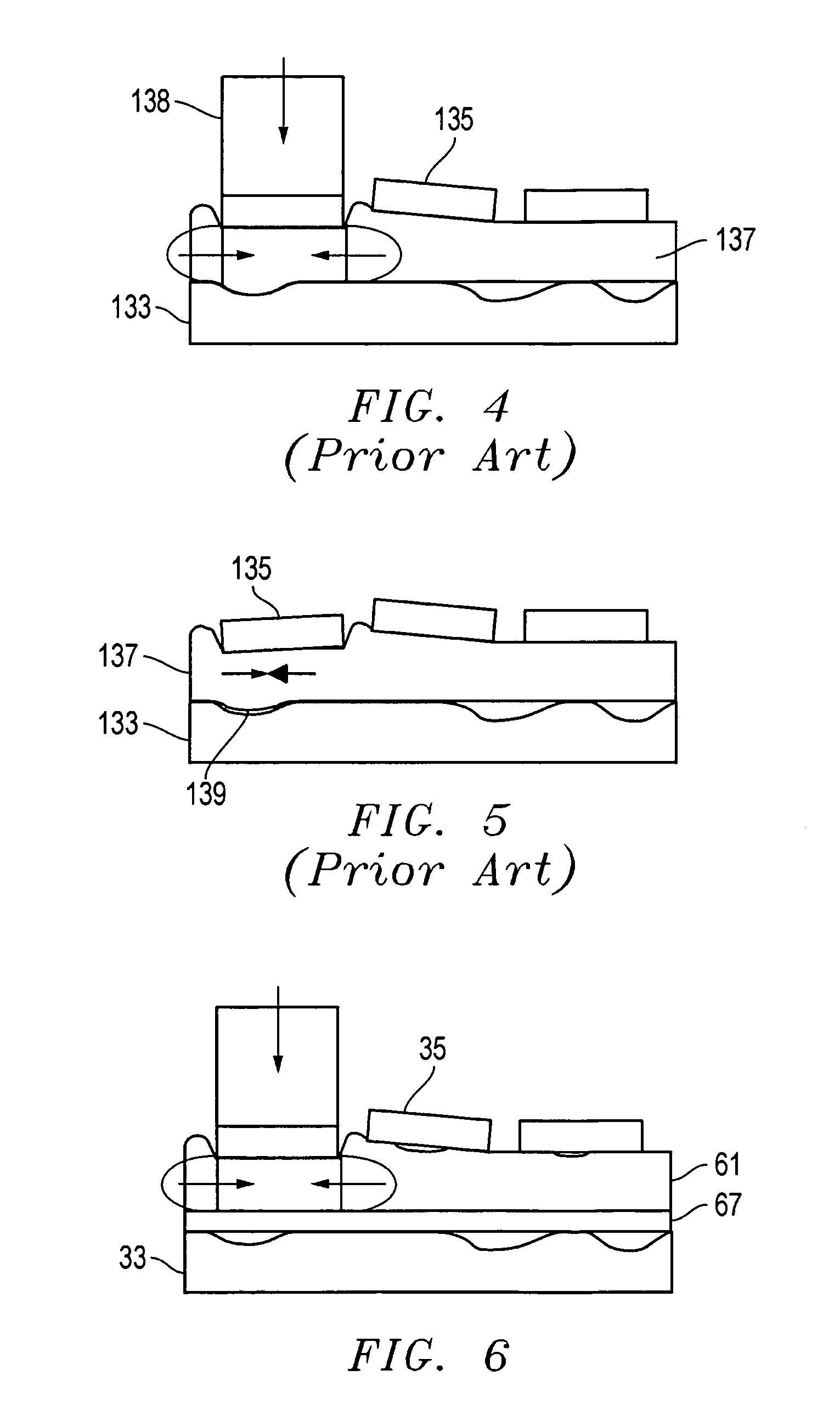System, method, and apparatus for multilevel UV molding lithography for air bearing surface patterning
a technology of air bearings and lithography, applied in the field of air bearing surface improvement, can solve the problems of affecting the patterning function, the thickness of the pancakes is too large to allow its removal, and the patterning function is at risk, so as to improve the de-molding properties, improve the accuracy, and improve the effect of accuracy
- Summary
- Abstract
- Description
- Claims
- Application Information
AI Technical Summary
Benefits of technology
Problems solved by technology
Method used
Image
Examples
Embodiment Construction
[0044] Referring to FIG. 1, one embodiment of a system 31 for replicating resist patterns with high accuracy is shown (not drawn to scale). System 31 is well suited for the processing and UV molding of workpieces, such as sliders in individual slider array processing systems. The system 31 comprises a carrier 33 having a plurality of workpieces 35 mounted thereto with a bonding material 37. Ideally, adjacent ones of the workpieces 35 are spaced apart from each other by a gap 39 of approximately 30 to 300 microns.
[0045] The system 31 also utilizes a stamp 41 for accommodating co-planarity variations between the workpieces 35. Variations between the workpieces 35 may include a step height 43 and a tilt angle 45. The step height 43 is defined as the vertical distance between the uppermost surfaces of the workpieces 35. In one version, the maximum value of the step height 43 that can be accommodated by the stamp 41 is approximately 1.2 microns. The tilt angle 45 is defined as the angle...
PUM
| Property | Measurement | Unit |
|---|---|---|
| thickness | aaaaa | aaaaa |
| thickness | aaaaa | aaaaa |
| step height | aaaaa | aaaaa |
Abstract
Description
Claims
Application Information
 Login to View More
Login to View More - R&D
- Intellectual Property
- Life Sciences
- Materials
- Tech Scout
- Unparalleled Data Quality
- Higher Quality Content
- 60% Fewer Hallucinations
Browse by: Latest US Patents, China's latest patents, Technical Efficacy Thesaurus, Application Domain, Technology Topic, Popular Technical Reports.
© 2025 PatSnap. All rights reserved.Legal|Privacy policy|Modern Slavery Act Transparency Statement|Sitemap|About US| Contact US: help@patsnap.com



